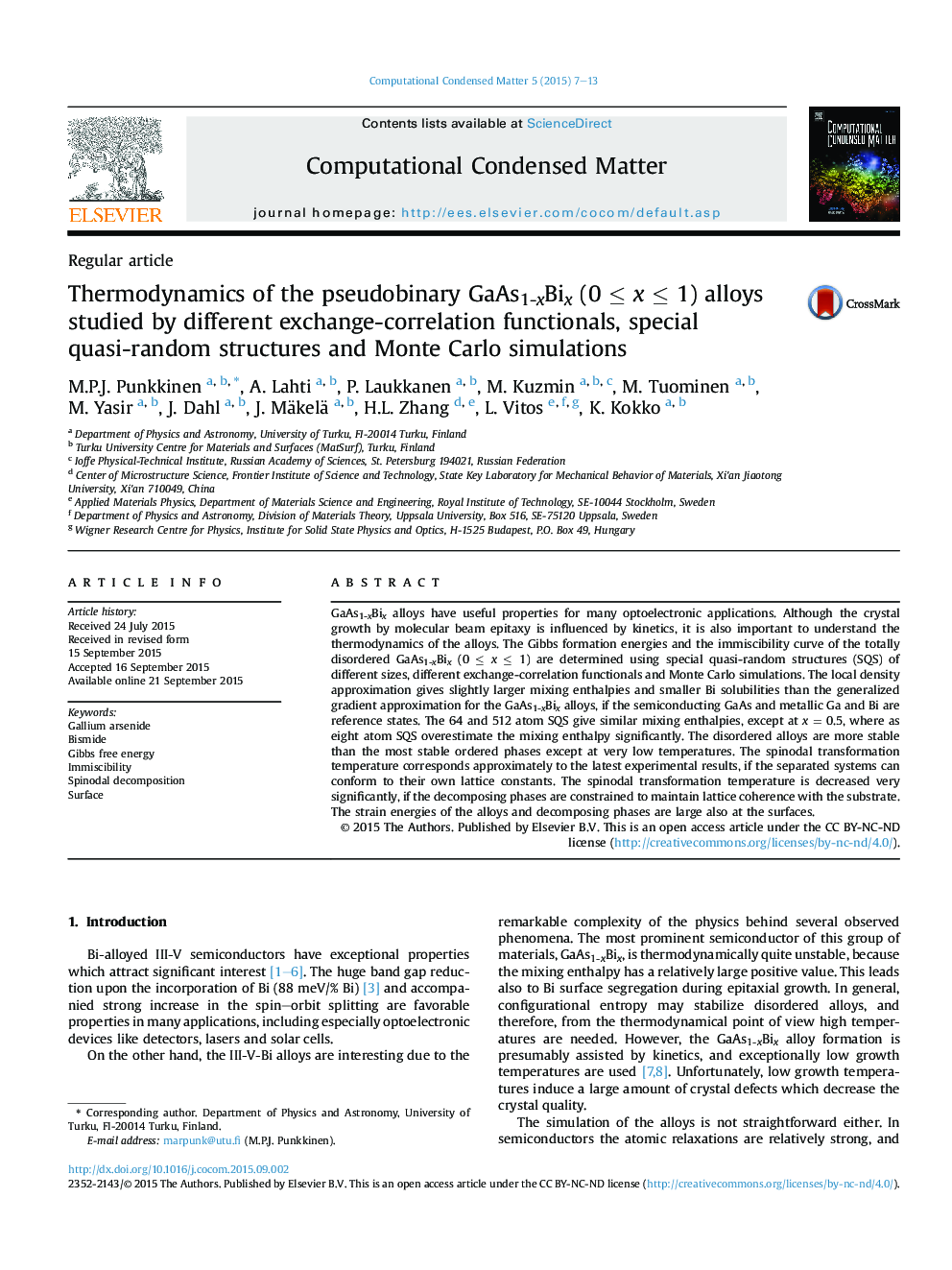| Article ID | Journal | Published Year | Pages | File Type |
|---|---|---|---|---|
| 1559674 | Computational Condensed Matter | 2015 | 7 Pages |
Abstract
GaAs1-xBix alloys have useful properties for many optoelectronic applications. Although the crystal growth by molecular beam epitaxy is influenced by kinetics, it is also important to understand the thermodynamics of the alloys. The Gibbs formation energies and the immiscibility curve of the totally disordered GaAs1-xBix (0 â¤Â x â¤Â 1) are determined using special quasi-random structures (SQS) of different sizes, different exchange-correlation functionals and Monte Carlo simulations. The local density approximation gives slightly larger mixing enthalpies and smaller Bi solubilities than the generalized gradient approximation for the GaAs1-xBix alloys, if the semiconducting GaAs and metallic Ga and Bi are reference states. The 64 and 512 atom SQS give similar mixing enthalpies, except at x = 0.5, where as eight atom SQS overestimate the mixing enthalpy significantly. The disordered alloys are more stable than the most stable ordered phases except at very low temperatures. The spinodal transformation temperature corresponds approximately to the latest experimental results, if the separated systems can conform to their own lattice constants. The spinodal transformation temperature is decreased very significantly, if the decomposing phases are constrained to maintain lattice coherence with the substrate. The strain energies of the alloys and decomposing phases are large also at the surfaces.
Related Topics
Physical Sciences and Engineering
Materials Science
Materials Science (General)
Authors
M.P.J. Punkkinen, A. Lahti, P. Laukkanen, M. Kuzmin, M. Tuominen, M. Yasir, J. Dahl, J. Mäkelä, H.L. Zhang, L. Vitos, K. Kokko,
